Decoding the DNA of Heritage Apples
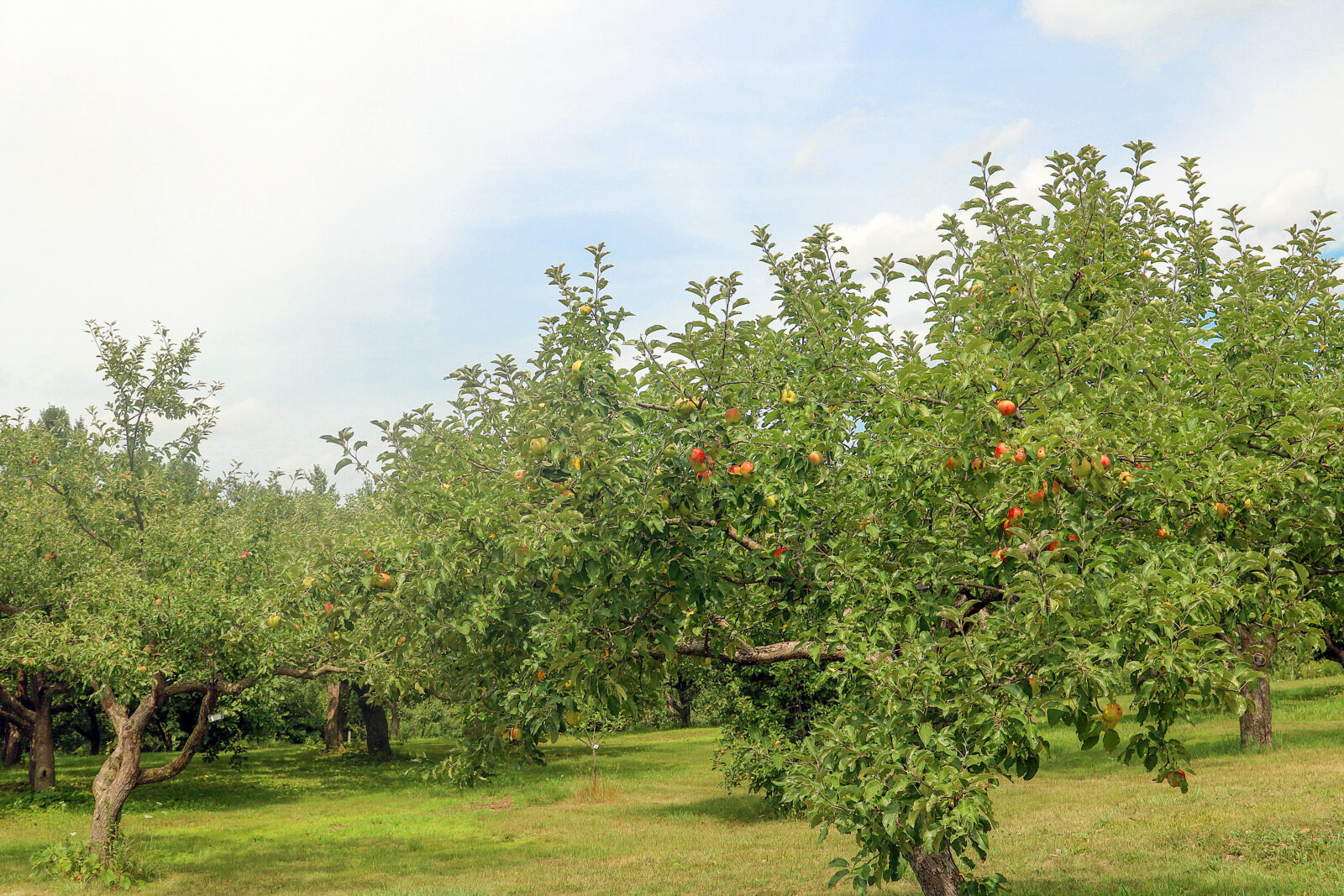
Decoding the DNA of Heritage Apples
Seed Savers Exchange teams with Washington State University to verify the name of the rare apples in its orchards.
By Emily Bieber
I enjoyed my internship experience at Seed Savers Exchange’s Heritage Farm this past summer. As an orchard intern, it was my responsibility to learn about the heritage apples grown here and research information about these historical varieties. Since new information has become easily accessible through the Internet, the apple records here at Seed Savers Exchange need to be kept up to date.
There are approximately 1,000 apple varieties split between the two orchards here at SSE. I worked to find previously unknown backstories of apple varieties and accumulated 20 pages of information for the orchard department to use in their records.
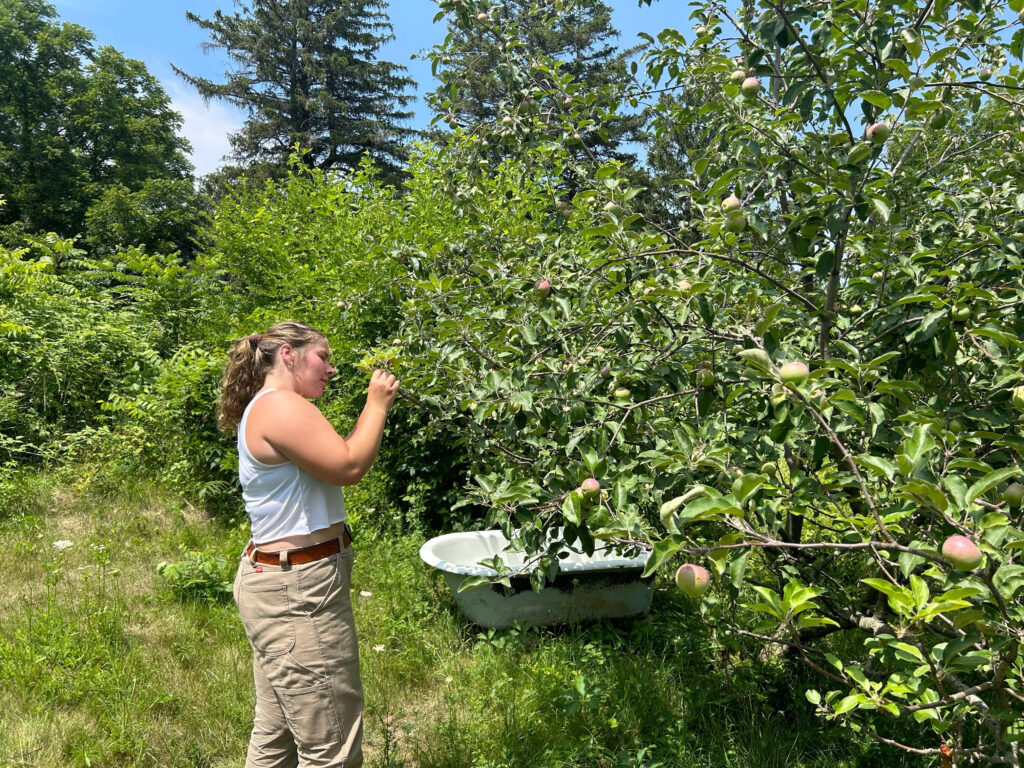
As a woman in STEM, I entered this internship looking to get research experience under my belt, as this is an essential skill for my field. Having grown up on a farm just outside of Waukon, Iowa, I am accustomed to hard work and being outside. I was not ready to give that up for an office or lab job quite yet.
The orchard internship was a split office and field position where I also got hands-on experience out in the orchards. When I saw the job description on the Seed Savers Exchange website, I thought this internship sounded like the perfect fit for me. What I did not expect was that my love of learning about science and my background in agriculture would collide.
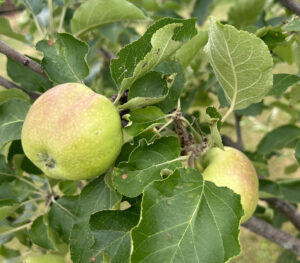
I am fascinated by the DNA testing Seed Savers Exchange is doing with the help of a research lab at Washington State University’s (WSU) Department of Horticulture. The sheer amount of apple varieties and their tendency to have similar appearances can make identification of apples rather difficult.
In the SSE orchards, trees are physically labeled with tags and mapped out on spreadsheets. However, tags get lost with time and—well—trees grow old! Some of our trees were planted long before Google Sheets was even a concept. Recent developments in genetic testing may allow us to rediscover these unknown varieties—or even bring to light a misidentification!
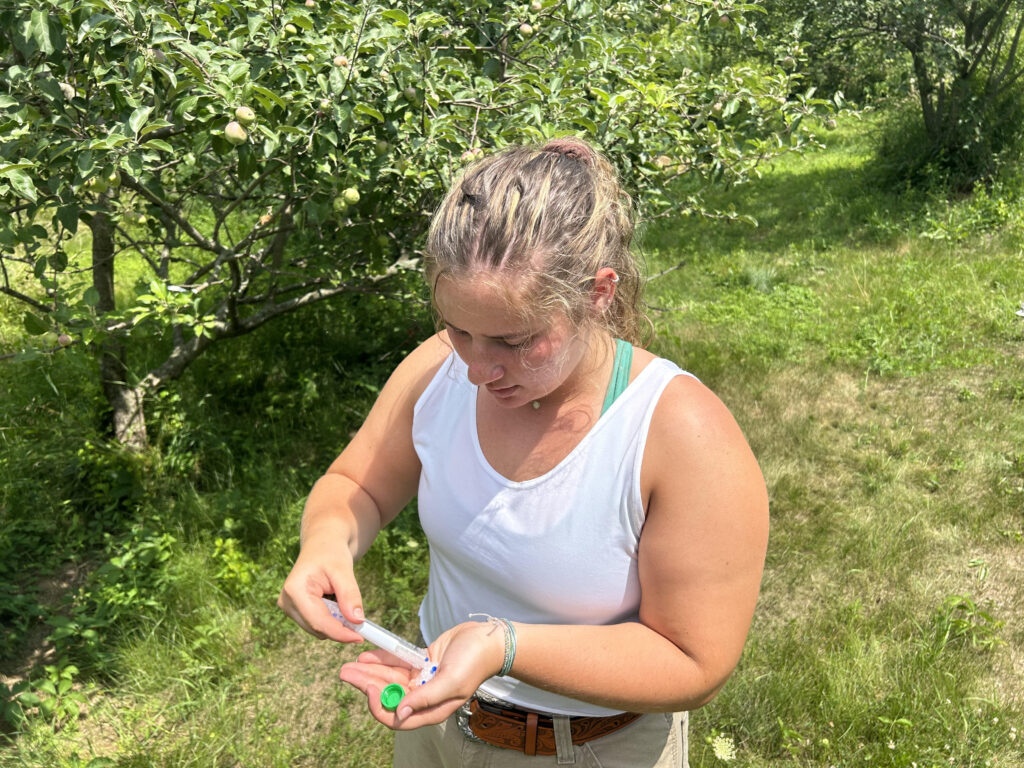
Through the “MyFruitTree” program at WSU, anyone is able to DNA test apple or cherry trees. SSE received its testing kit in the mail; the kit was equipped with centrifuge tubes filled with silica beads and directions for use. We then got to work, taking five or six small leaves from the trees we wanted to test and placing them in an individual tube before labeling each tube to be shipped away.
Once a leaf is off the tree, the DNA starts to degrade. This is why each tube is filled with white silica beads to dry out the leaves and keep them at a constant temperature, effectively preserving the DNA. Each tube also has indicator beads to show this process is still working. If the indicator beads turn from blue to pink, we know the leaves can no longer be tested successfully.
With that, we were done with our half of the project—but I had to know how exactly the process works. I wanted to know how WSU tests the apples and how they are able to say, “Yes, this is a ‘Duchess of Oldenburg,’” a wonderfully cold-hardy apple with Russian origins. Strap in for a quick biology lesson.
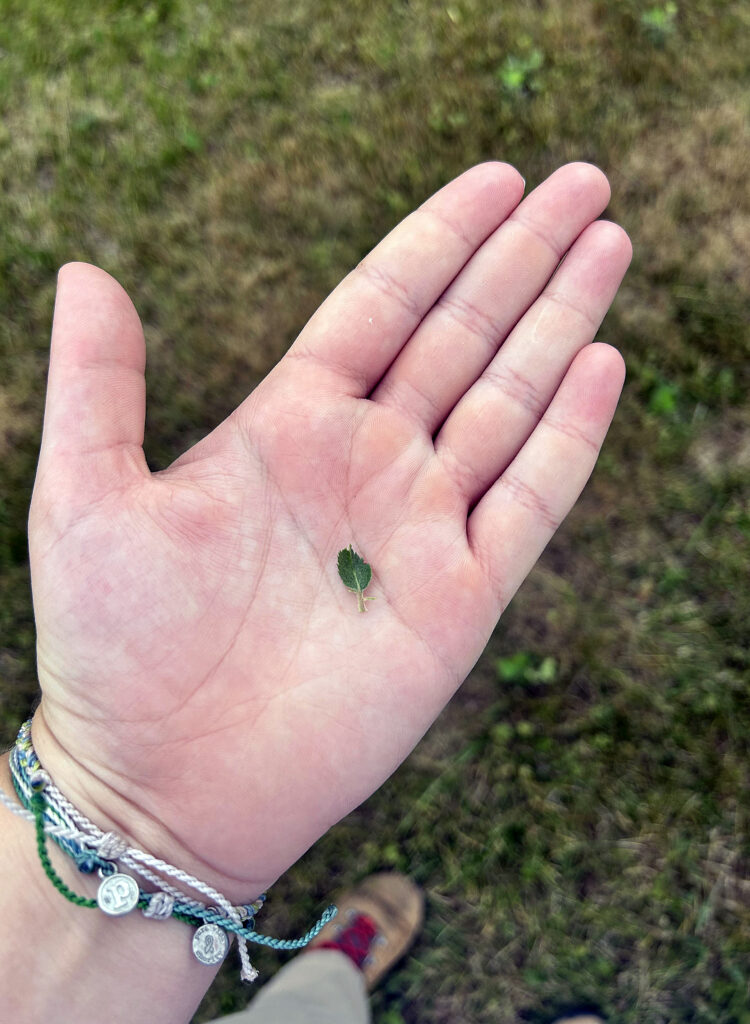
Everything is made up of DNA, the carrier of genetic information. DNA is arranged on chromosomes, of which apples have 17 pairs—one from each parent. This allows WSU to test apple ancestry to learn more about cross breeds and their origins.
The apple DNA is tested by analyzing single-nucleotide polymorphism or SNPs (pronounced “snips”). Each SNP reveals genetic differences between each chromosome pair and among individuals. In this process, information comes from hundreds of genetic points along each chromosome.
The genotype is examined through “SNP arrays,” which are basically magnifying glasses that allow scientists to look at thousands of SNPs efficiently. DNA testing has four main outcome categories that are incredibly useful to SSE:
- Confirms cultivar name: This result verifies that the name of the apple in our records is correct.
- Corrects cultivar name: This result indicates that the name we have recorded is not accurate, confirms the apple’s real identity, and allows SSE to adjust our records accordingly.
- Identifies synonyms: A historical synonym can be found when one sample’s DNA matches another sample, but either due to lost historical information or low degree of certainty in a possible name, there is no associated cultivar name. The sample name will be listed with the other matching samples as synonyms.
- Unknown cultivar name but further research could uncover the identity: The results are completely based on samples already existing in the dataset. If a matching sample has yet to be tested, there is no way to confirm the identity of the apple. Historical research, physical appearance, and more in-depth DNA testing can help gain knowledge of the apple’s background and possibly uncover the identity.
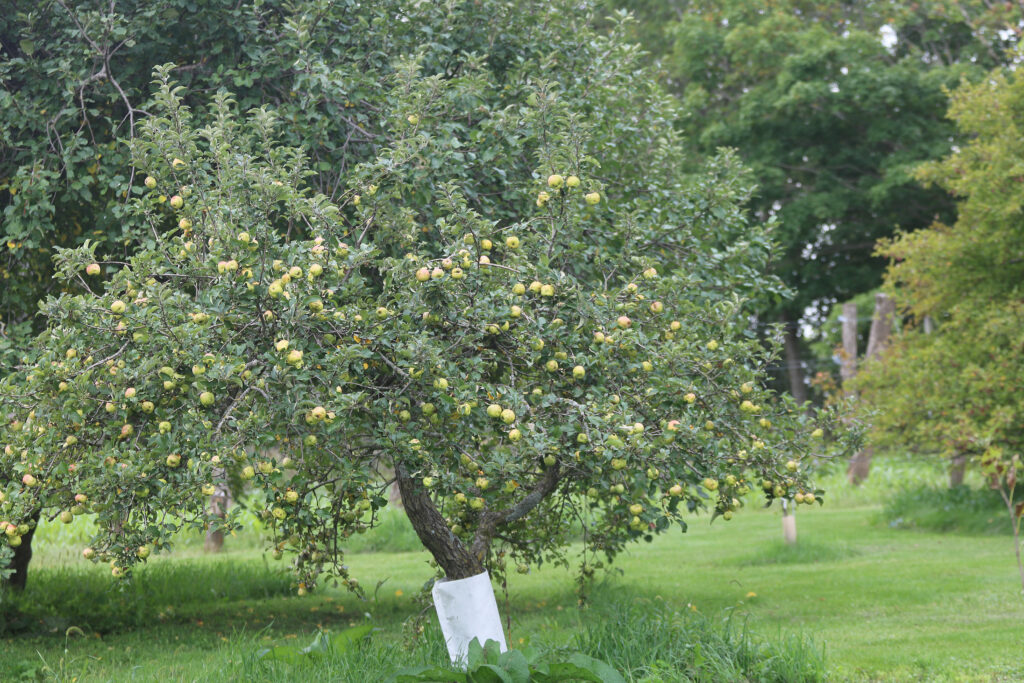
DNA testing update
Seed Savers Exchange has received results of the first 80 leaf samples that were sent to Washington State University for genetic testing back in July. These tests help determine whether specific
SSE trees were identified with the correct variety name. The results were as follows:
- Twenty-four trees were not true-to-type, but are now correctly identified.
- Twenty previously untagged trees now have identification.
- Five identities were confirmed.
- Thirty trees were unique in the dataset. (SSE will receive updated results as the dataset grows.)
- One sample failed and is being rerun.
References for this article include: a presentation by Dr. Cameron Peace of Washington State University at the Third Boulder Apple Tree Symposium (December 2020); DNA Recommendations for Seed Savers Exchange Orchard Management; “What’s in a Name? The Importance of Identity in Heirloom Apple Tree Preservation” (Plants People Planet Journal, July 2022); My Fruit Tree website.
Emily Bieber interned at Seed Savers Exchange during the summer of 2023. She is currently a student at the University of Iowa.
This article was initially published in fall 2023 issue (Volume 12, Issue 4), of the Heritage Farm Companion, SSE’s member publication.